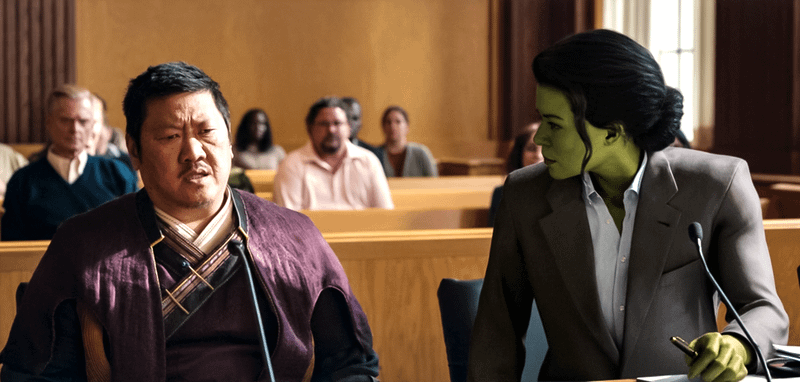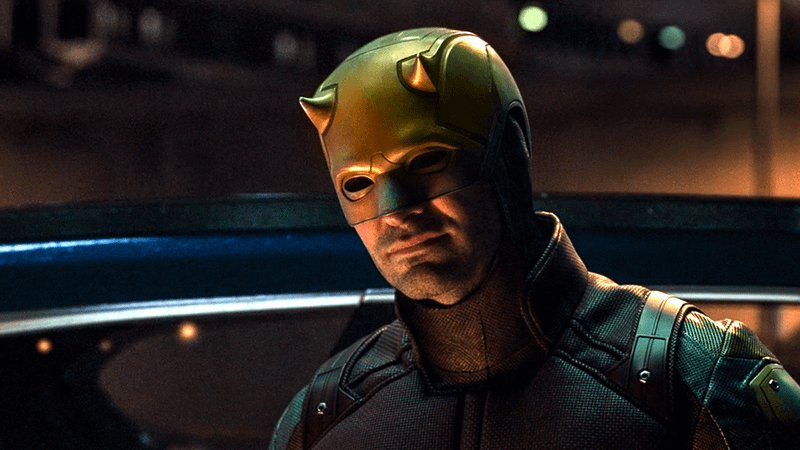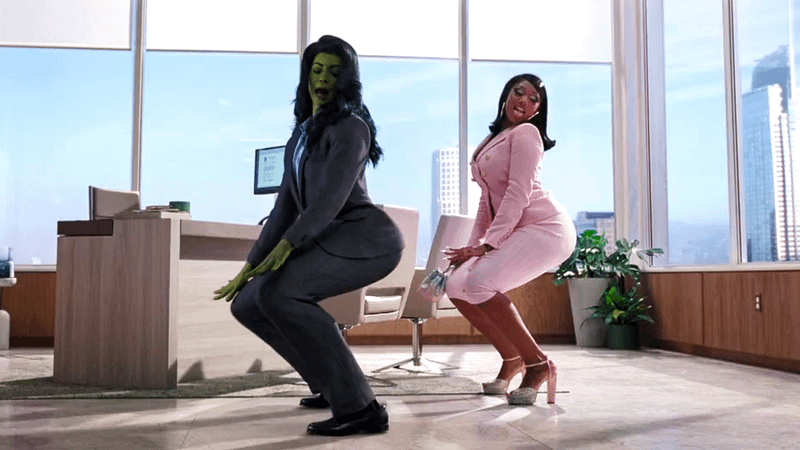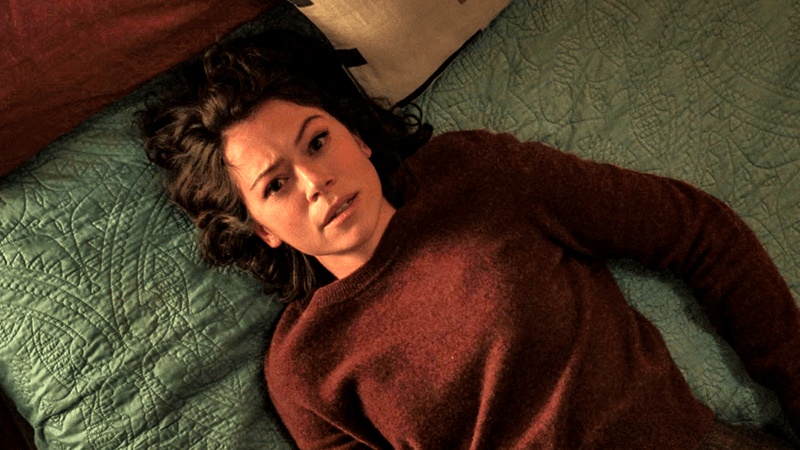
Marvel Studios’ Disney+ series She-Hulk: Attorney at Law has been heavily criticized ever since its first episode aired, with many fans citing a laundry list of issues. These takes, naturally, led to the Tatiana Maslany-led project getting a handful of bad reviews.
The project even got heavily review-bombed by some very vocal people (hard even to call them MCU fans with behavior like that on their belts).
So what was all the fuss about, and do any of these complaints about the show have merit? The answer is yes, some do have merit, but others are completely off the mark.
Lackluster CGI - Reasonable

When anyone wants to tear apart She-Hulk, the CGI would likely be where they start first.
It’s honestly hard to defend the show on this front. When the leading character of one’s project is completely CGI-driven, it has got to look good, or the whole product suffers because of it.
Jen's hulking hero simply looks off more times than not. There are shots where she’s far more improved every now and then, but those happen far less than they should.
By comparison, The Hulk and Abomination look fantastic from the onset—which makes sense, seeing as they already had CGI models done prior to the show.
Cameo Galore - Unreasonable

There’s no denying that She-Hulk had an abundance of cameos over its first season. Some of these were well-known players, and others were D-List heroes or villains.
People like to take shots at cameos being bad for simply just existing—but that’s not the case. They’re only a downside if they both add nothing to the narrative and also hold the plot, or its characters, down.
Here, each cameo served a purpose. Whether it be an unknown who is the subject of a legal case, Tim Roth’s Abomination, or Benedict Wong’s Sorcerer Supreme—each example heavily influenced the plot and character work at play.
And, even if they didn’t, most of the cameos shouldn’t hurt the show either, seeing as how the majority of them were completely unknown with very little fanfare to offer on their own.
The biggest “cameo” of all was Charlie Cox’s Daredevil. But he’s far more than just that—his hero is integral to the eighth episode’s plot, an installment that's among Marvel’s best across all of Disney+. His brief appearance in the finale was just the cherry on top.
Need More Lawyering - Reasonable

For a show that follows a lawyer, She-Hulk sure does have very little legal work happening throughout the series—especially when it comes to Jen specifically.
It’s completely understandable to see people feel this way, as this particular point is a clear example of some missed potential of the series. Audiences should absolutely have been given more time with Jen in the courtroom.
It would go a long way to help show the audiences why Jen connects with that work way more than the notion of being a superhero. For many people, it’s hard to understand why someone like Jen wouldn’t want to be an Avenger—so bringing focus to the foreground would have really benefited the story being told.
By the end of the show, the lead character is only ever in court a handful of times. Usually, when a case is in progress, it follows one of the show’s supporting characters, such as Nikki or Pug.
#NotMyDaredevil - Unreasonable

She-Hulk marks the first time that Charlie Cox’s Daredevil has entered the MCU, at least under the watchful eye of Marvel Studios President Kevin Feige. This version of Matt Murdock the show gave audiences didn’t seem to line up with what many wanted.
Some were irked that he had a lighter tone and quipped here and there—others didn’t much care for his new yellow and red suit.
While those suit critiques are subjective, where many of the criticisms go wrong is in claiming the show ruined Daredevil himself. It didn’t.
Putting the question of canonicity aside, the Matt Murdock on screen was not a lesser version of what Netflix offered viewers. She-Hulk simply offered a glimpse of the hero in far different circumstances and locations.
Some seem incapable of understanding that people can be more than one thing. Sure, the Daredevil seen on Netflix was a much darker and more serious version of Matt. But does this mean the man can’t crack a joke once in a while? Or have a light-hearted demeanor from time to time?
Characters don’t boil down to one tone or characteristic. Someone could have the darkest year of their life, but at some point in those 365 days, they probably laughed once or twice during that time frame for some reason.
And now, thanks to his stint in LA, Murdock has a new friend—the best kind.
The Ass That Shook the World - Unreasonable

It’s quite surprising that the post-credits scene for Episode 3, which saw Megan Thee Stallion twerking with She-Hulk in her office, got the reaction it did.
Some people burned bright red with anger at the audacity of Marvel Studios to let its characters have some simple, goofy fun. How dare they?
Now, to clarify, there’s nothing wrong with disliking the scene in question. Personally, it didn’t land for me, either. The issue, however, lies in those who have taken the gag as a means to completely hate the series and anyone who enjoys it.
It was a post-credits scene. It had no significance to the plot—there are quite literally zero reasons to have gotten as fed up as some did. A good comparison would be if a single joke in a three-hour movie immediately caused someone to call that film one of the worst they’d ever seen.
Meta Falls Flat - Reasonable

Some people really do not like how She-Hulk talks to the audience. Many feel it’s a quality that strictly belongs in a Deadpool movie.
While it may surprise some, in 1980, She-Hulk was actually the first Marvel Character to ever break the fourth wall and go full meta. So, the element has every right to be a part of her Disney+ series.
Though, it’s understandable that it simply didn’t land correctly for many. Sometimes the gag felt forced or inorganic to the story, or maybe a joke here and there simply wasn’t funny. The show certainly didn’t nail every joke it made, after all.
However, despite having said all that, where the meta elements did hit a home run was in the finale. The writing was sharp, witty, and well-performed—three things that weren’t true for every previous fourth-wall break.
Too Woke? - Unreasonable

This one is a criticism that is among the worst out there: She-Hulk is too woke.
First off, if anyone is using the term “woke” unironically, then that’s saying more about one’s self than it is about the project being insulted. Secondly, simply put, the series is not too woke (if the word even has any meaning these days).
Modern-day content is often criticized as "woke" by certain groups if they believe that it's pushing an agenda that gives more visibility to minorities in favor of its story. She-Hulk's story is unironically ingrained in Jennifer Walters' struggles against characters who may be critical of such "wokeness," like the incel-inspired Intelligencia. So basically, a show like this pisses off the right people.
More often than not, "woke" criticism is an immature, usually bigotry-fueled response that makes it all the harder for legitimate feedback on those parts of the show to be heard.
As a reminder, it's perfectly okay to criticize the show. It’s far from perfect, and its quality across the season has its highs and lows.
When it comes to these more abrasive, controversial topics, it's important to remember that She-Hulk is satirical at heart. This means elements are exaggerated and played up to highlight the theme, message, or overall purpose of a piece.
This idea is at play constantly throughout the series. However, maybe just not enough.
The show should have leaned far more into its own satire. It’s not present as much as it should be, which can make those moments where it rears its head feel a little jarring.
What’s Next for Jennifer Walters

She-Hulk: Attorney at Law was a fun show, but it was one that had peaks and valleys in its quality, leading to an uneven experience. The strongest entries of the first season include Wong’s legal action against another magician, Abominations villain therapy, Daredevil’s visit, and Jen’s trip to go see K.E.V.I.N.
Aside from those four installments, all of the other stories were hit or miss, with little gems to be found here and there.
Did She-Hulk deserve the bad reviews? Well, it certainly deserved some criticism, but not so much the heavy hate it tends to see directed at it online.
As of now, the next step for She-Hulk isn’t very clear.
She’ll almost certainly take part in Avengers: The Kang Dynasty and Secret Wars—but those aren’t for three to four years from now.
A second season for Attorney at Law isn't confirmed, but the series' structure is perfect for an ongoing narrative. Though, if she doesn’t get more solo content, there are several alternatives.
For one, she could appear in Daredevil: Born Again with Charlie Cox. After all, not only are they a power couple that needs more screen time, but Matt Murdock’s show will have eighteen episodes—plenty of time for Jen to appear in at least one episode.
Then there’s Captain America: New World Order, which has The Leader as its main villain and is rumored to include Bruce Banner. After that, whispers seem to indicate a World War Hulk movie is on its way, an adventure Jen is almost certainly involved in.
No matter when her next adventure might be, one thing is for sure: fans will be seeing Tatiana Maslany’s hero once again.
She-Hulk: Attorney at Law is now streaming on Disney+.




 Billion at the Box Office" style="width:100%;height:auto;" loading="lazy">
Billion at the Box Office" style="width:100%;height:auto;" loading="lazy">







